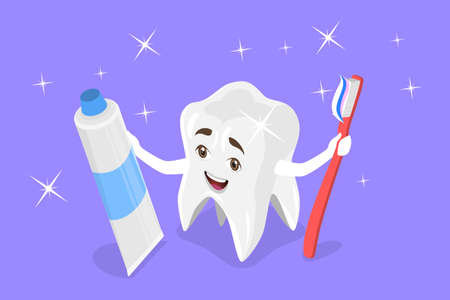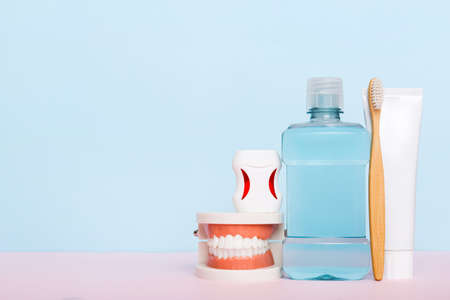Overview of Whitening Toothpaste and Mouthwashes
In the pursuit of brighter, whiter smiles, American consumers have increasingly turned to whitening toothpaste and mouthwashes as part of their daily oral care routines. These products are widely available on store shelves across the U.S., promising to remove stains, fight discoloration, and enhance the natural whiteness of teeth. At their core, whitening toothpastes often rely on mild abrasives, such as hydrated silica or baking soda, to physically polish away surface stains caused by coffee, tea, wine, or smoking. Many also contain chemical agents like hydrogen peroxide or carbamide peroxide—the same bleaching ingredients found in professional dental treatments but at much lower concentrations. Whitening mouthwashes typically incorporate hydrogen peroxide as well, aiming to deliver a boost of whitening power while freshening breath. Brands market these products as easy-to-use solutions for a brighter smile without the need for expensive dental visits, tapping into America’s cultural emphasis on confidence and appearance. As the demand for cosmetic dental products grows in the U.S., understanding what’s inside these formulas—and how they work—has become increasingly important for consumers seeking effective ways to improve their smiles.
2. How Whitening Products Work: Science vs. Marketing
When it comes to whitening toothpastes and mouthwashes, the science behind these products often gets overshadowed by bold marketing claims. To understand what these products can really do for your smile, it’s crucial to break down the mechanisms behind their whitening agents and how those stack up against consumer expectations.
The Active Ingredients: What’s Really in Your Whitening Product?
Most whitening toothpastes and mouthwashes rely on a combination of abrasives, chemical agents, and sometimes low concentrations of peroxide. Here’s a comparison of common ingredients found in these products:
| Ingredient | Function | Effectiveness |
|---|---|---|
| Abrasives (e.g., silica) | Physically removes surface stains | Effective for extrinsic stains only |
| Hydrogen Peroxide/Carbamide Peroxide | Chemically bleaches teeth | Mild effect at low concentrations in OTC products |
| Blue Covarine | Optical brightener; creates temporary illusion of whiteness | Instant but short-lived visual effect |
| Sodium Hexametaphosphate | Prevents new stain formation | Helps maintain results, does not whiten existing stains |
What Can You Realistically Expect?
The truth is, over-the-counter whitening toothpastes and mouthwashes are primarily effective at removing surface stains caused by food, drinks, or tobacco use (extrinsic stains). They do little to change the natural color of your teeth or treat deeper (intrinsic) discoloration. Most marketing campaigns promise a “brighter, whiter smile,” but the actual results are usually subtle—a slight improvement in brightness rather than dramatic whitening.
Marketing Hype vs. Scientific Reality
- Marketing Claims: Suggest quick, dramatic whitening—sometimes “up to 5 shades whiter.” These statements often rely on visual tricks or short-term optical effects.
- Scientific Evidence: Clinical studies show that most whitening toothpastes provide a modest improvement after regular use—typically one to two shades lighter at best.
- Mouthwashes: Due to limited contact time with teeth, their whitening impact is even less pronounced compared to toothpaste.
The Bottom Line for Consumers
If you’re looking for a noticeable transformation, over-the-counter whitening products may leave you underwhelmed. Their primary benefit lies in maintaining oral hygiene and gently polishing away new surface stains—not delivering professional-level results. For significant whitening, professional dental treatments remain the gold standard.

3. Benefits and Limits: What These Products Can (and Can’t) Do
When it comes to over-the-counter whitening toothpaste and mouthwashes, many Americans are drawn in by bold promises of a brighter, more confident smile. These products often use mild abrasives or chemical agents like hydrogen peroxide to help remove surface stains caused by coffee, tea, wine, or smoking. Their main benefit lies in convenience and accessibility: they’re easy to incorporate into your daily routine, affordable compared to professional treatments, and widely available at supermarkets and drugstores nationwide.
However, while they can be effective at addressing superficial discoloration, their power is limited. Over-the-counter whitening toothpaste and rinses generally work only on extrinsic stains—those on the outer layer of your teeth. They don’t penetrate below the enamel or tackle deeper intrinsic stains caused by factors like medication side effects, trauma, or genetic conditions. In addition, the concentration of bleaching agents in these products is much lower than what you’d find in professional dental treatments, which means results tend to be modest and take longer to appear.
It’s also worth noting that excessive use of abrasive toothpaste can potentially wear down enamel over time, leading to sensitivity and an increased risk of cavities. And while whitening mouthwashes may freshen breath and provide a minor brightening effect, they typically aren’t in contact with teeth long enough to make a significant difference on their own.
Ultimately, if your goal is a dramatic transformation or tackling stubborn stains, professional options—such as in-office bleaching or custom take-home trays provided by a dentist—offer more powerful and predictable results. But for those seeking subtle improvements or maintenance between dental visits, over-the-counter whitening products remain a popular first step.
4. Are Whitening Products Safe? Side Effects and Considerations
When it comes to whitening toothpastes and mouthwashes, American consumers are increasingly concerned not just about efficacy, but also about safety. The main active ingredients—such as hydrogen peroxide, carbamide peroxide, and mild abrasives—are generally recognized as safe when used as directed. However, understanding potential side effects and industry recommendations is crucial for making informed decisions.
Common Ingredients and Their Safety Profile
| Ingredient | Function | Typical Safety Concerns |
|---|---|---|
| Hydrogen Peroxide | Bleaching agent that breaks down stains on enamel | Sensitivity, irritation of gums if overused |
| Carbamide Peroxide | Releases hydrogen peroxide for a gradual whitening effect | Mild sensitivity; rare soft tissue irritation |
| Abrasives (e.g., silica) | Physically polishes and removes surface stains | Enamel wear with excessive use or aggressive brushing |
| Fluoride | Protects against cavities during whitening process | Generally safe; excessive ingestion can cause fluorosis in children |
Potential Side Effects: What Americans Should Watch For
The most frequently reported side effect of whitening products is increased tooth sensitivity, especially to hot or cold foods and drinks. Some users also experience gum irritation or mild discomfort after repeated use. While these symptoms are typically temporary, persistent issues may indicate overuse or an underlying dental condition requiring professional attention.
Summary of Potential Side Effects
- Sensitivity: Especially common with peroxide-based products; often subsides after discontinuation.
- Gum Irritation: May occur if product contacts soft tissues for prolonged periods.
- Enamel Erosion: Overuse of abrasive pastes can gradually thin enamel.
- Allergic Reactions: Rare, but possible with certain flavorings or chemicals.
The ADA Seal: What It Means for Consumers
The American Dental Association (ADA) evaluates whitening products for both safety and effectiveness. Products that carry the ADA Seal of Acceptance have been rigorously tested to ensure they meet strict standards. The ADA recommends using only those toothpastes and mouthwashes that display this seal, as it signals a trustworthy choice for maintaining oral health while achieving a brighter smile.
5. The Whitening Craze in American Culture
When it comes to dental aesthetics, few trends are as deeply ingrained in American culture as the quest for a dazzling, white smile. Hollywood has long set the standard for what many consider “picture-perfect” teeth—think of iconic actors and celebrities flashing flawless smiles on the red carpet. This glamorous ideal has trickled down to everyday Americans, fueling the demand for whitening toothpastes and mouthwashes that promise to deliver similar results at home. The influence of Hollywood isn’t limited to movie stars; social media platforms like Instagram and TikTok have amplified these beauty standards, with influencers and everyday users alike showcasing dramatic before-and-after photos and touting their favorite whitening products. Viral trends such as “teeth whitening challenges” or endorsement deals with dental care brands make whiter teeth seem more attainable, increasing consumer curiosity and driving sales. Meanwhile, the wellness industry has seamlessly woven oral care into its broader narrative of self-care and holistic health. With the rise of natural and “clean” beauty products, Americans are not only seeking brighter teeth but also safer, more transparent ingredient lists in their whitening toothpastes and rinses. These cultural influences collectively shape how consumers perceive the value of whiter teeth—not just as an aesthetic choice but as a symbol of health, confidence, and even professional success. As a result, whitening products have become staples in American bathrooms, reflecting both societal pressures and personal aspirations for a radiant smile.
6. Expert Opinions: What Dentists in the U.S. Say
When it comes to whitening toothpastes and mouthwashes, dental professionals across the United States emphasize the importance of realistic expectations and responsible use. According to Dr. Sarah Mitchell, a cosmetic dentist based in Chicago, “Whitening toothpastes can help remove surface stains caused by coffee, tea, or smoking, but they typically won’t change the natural color of your teeth.” Many U.S. dentists caution that overuse of abrasive whitening products can wear down enamel over time, potentially increasing sensitivity and making teeth more susceptible to staining in the future.
Dr. James Lee, a practicing dentist in New York, recommends looking for products that carry the American Dental Association (ADA) Seal of Acceptance. “The ADA seal means the product’s claims are backed by scientific evidence and it’s safe when used as directed,” he explains. Dentists also suggest using whitening mouthwashes as a supplement rather than a replacement for brushing and flossing. “Mouthwashes may help maintain results after professional whitening or daily brushing, but they’re not strong enough to deliver dramatic whitening on their own,” notes Dr. Karen Walker from Los Angeles.
Experts agree that individual results may vary depending on factors such as diet, oral hygiene habits, and genetic predisposition to tooth color. For those seeking noticeable changes, most dentists advocate consulting with a dental professional before starting any whitening regimen. As Dr. Mitchell sums up, “Professional guidance ensures you choose safe products suited to your needs and avoid damaging your enamel in pursuit of a brighter smile.”
7. Tips for a Brighter Smile: Beyond Whitening Products
While whitening toothpastes and mouthwashes can help enhance your smile, maintaining truly bright teeth requires a holistic approach that goes beyond just using these products. Here are some practical lifestyle and oral care tips that can maximize the effects of whitening treatments and help you achieve long-lasting results.
Practice Consistent Oral Hygiene
Brush your teeth at least twice a day with fluoride toothpaste and floss daily to remove plaque and prevent stains from building up. Consider using an electric toothbrush for more effective cleaning, especially along the gumline where stains can accumulate.
Watch What You Eat and Drink
Certain foods and beverages—like coffee, tea, red wine, soda, and dark berries—are notorious for staining teeth. If you indulge, try drinking through a straw or rinsing your mouth with water afterward to minimize discoloration. Eating crunchy fruits and vegetables like apples, carrots, and celery can also help clean your teeth naturally.
Don’t Skip Regular Dental Visits
Routine professional cleanings every six months are essential for keeping your smile bright. Dental hygienists can remove stubborn surface stains and tartar that regular brushing cant tackle. Your dentist may also recommend specific whitening options suited to your needs.
Quit Smoking and Tobacco Use
Tobacco products are one of the leading causes of yellowing and stained teeth in the U.S. Quitting smoking not only improves your overall health but also significantly enhances the whiteness of your smile over time.
Hydrate for Oral Health
Drinking plenty of water throughout the day helps wash away food particles and bacteria that contribute to staining. It’s also great for saliva production, which is crucial for keeping your mouth healthy and minimizing discoloration.
Be Cautious With At-Home Remedies
DIY whitening hacks found online—like baking soda or hydrogen peroxide pastes—may promise quick results but can damage enamel if overused. Always consult with a dental professional before trying any new whitening method outside of approved products.
By combining smart lifestyle choices with consistent oral care habits, you can support the effectiveness of whitening toothpastes and mouthwashes while enjoying a healthier, brighter smile for years to come.


